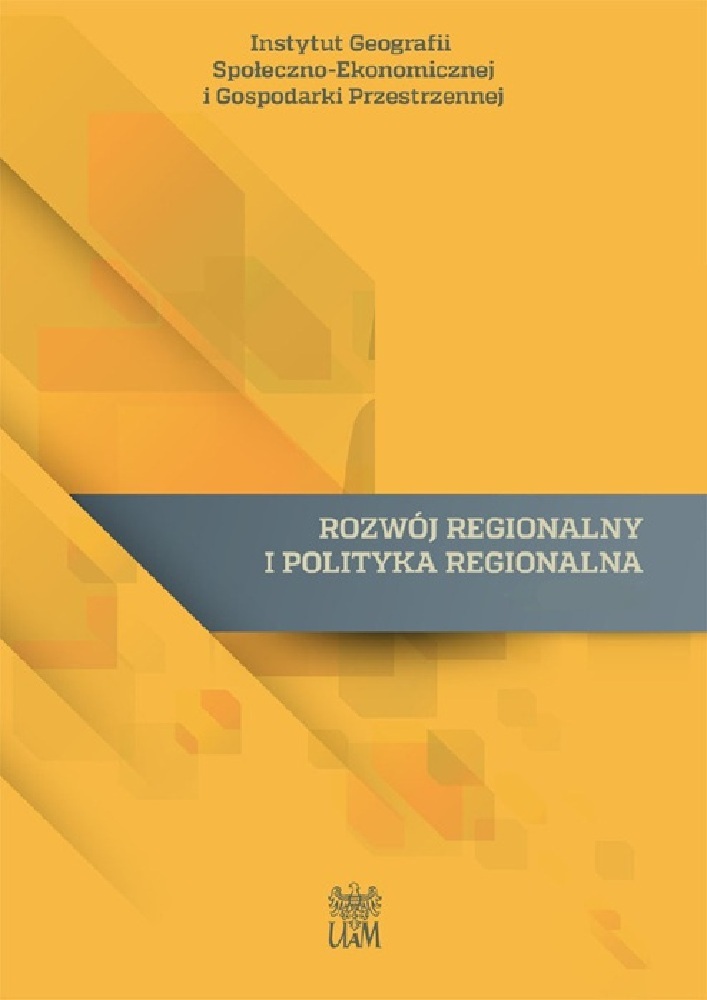Abstrakt
Celem artykułu jest prezentacja wyników badań dotyczących współpracy transgranicznejw Karelii, regionie położonym na pograniczu fińsko-rosyjskim. Analiza zjawiska została oparta na danych empirycznych zgromadzonych metodą badań terenowych, które były wykonane w trzech fińskich miejscowościach: Joensuu, Kitee i Ilomantsi. Na podstawie ankiet i wywiadów przeprowadzonych z przedstawicielami lokalnych społeczności ukazano charakter oraz intensywność różnych aktywności podejmowanych na zewnętrznej granicy Unii Europejskiej.
Bibliografia
Bort E. 2006. Integrated borderlands? [W:] M. Caparini, O. Marenin (red.), Borders and Security Governance: Managing Borders in a Globalised World. Raport DCAF. Genewa (http://www.dcaf.ch/publications/kms/details.cfm?&id=22189&nav1=4; dostęp 25.10.2010).
Chojnicki Z., Stryjakiewicz T. (red.) 1996. Problemy współpracy regionalnej w polsko-niemieckim obszarze przygranicznym. PWN, Warszawa.
Fall J. 2005. Drawing the line: nature, hybridity and politics in transboundary space. Ashgate Publishing Company, Burlington, s. 105–146.
Kononenko V., Laine J. 2008. Assesment of the Finnish-Russian Border: The case of Vaalimaa border crossing point. The Finnish Institute of International Affairs (www.upifiia.fi/assets/.../UPI_Working_Papers_57_2008.pdf.pdf; dostęp 14.10.2010).
Köppen B. 2009. Aspects of Cross-Border Co-operation and Inter-action between Finland and the Russian Federation – Highlighting Strengths and Weaknesses as Judged by Finnish Experts. Reports of the Karelian Institute 2: 41–53.
Martinez O.J. 1994. The Dynamics of Border Integration: New Approaches to Border Analysis. [W:] C. Schofield (red.), Global Boundaries. Routledge, London, s. 1–15.
Scott W.J. 2009. Borders, Border Studies and EU Enlargement. [W:] B. Köppen, M. Horn (red.), Das Europa der EU an seinen Grenzen!? Konzepte und Erfahrungen der europäischen grenzüberschreitenden Kooperation. Wyd. Logos Verlag, Berlin, s. 81–99.
Stryjakiewicz T., Kaczmarek T. 2000. Transborder co-operation and development in the conditions of great socio-economic disparities: the case of the Polish-German border region. [W:] J. J. Parysek, T. Stryjakiewicz (red.), Polish economy in transition: spatial perspectives. Bogucki Wyd. Nauk, Poznań.
Raporty z prowadzonych badań (http://www.uni-landau.de/):
Brejwo Ł., Dahlem J., Noponen K., Finance O., Remy P.-Y. 2010. Preferences of Russian tourists in North Karelia. Qualitative case studies from Joensuu, Kitee, Koli and Ilomantsi.
Ciesielska M., Ertz F., Nyrhi T., Samur S., Wingerter M. 2010. Attitudes towards cross-border cooperation & stereotypes
Dyba W.M., Owczarek P., Wangler A., Sulzer J., Jacquemin L. 2010. Retail and service – research on shopping habits of the Russian customers in retail and selected service establishments in Finland near the border with Russia.
Gonciarski Ł., McEvan J., Tobi N., Petry L., Rivat R. 2010. Finnish Purchasing Habits in Russia. Are border Finns fearful of Russia?
Masiel K., Świżewski K., Binder J., Englert D., Tubuo F. 2010. Accommodation and housing in North Karelia. A study about Russians crossing the border.
Licencja
Copyright
© 2011 IGSEiGP, Uniwersytet im. Adama Mickiewicza w Poznaniu
OPEN ACCESS
